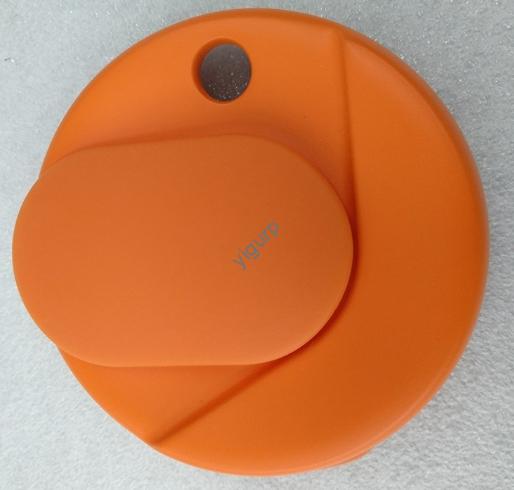If you’re working on product prototyping—whether for a new phone case, a medical device, or a kids’ toy—you might have asked yourself: “Can 3D printing prototypes use soft rubber?” Well, I’m here to give you a clear answer: yes, they absolutely can! Soft rubber is a versatile material for 3D printed prototypes, especially when you need that soft touch, flexibility, or even a bit of stretch. Let’s walk through everything you need to know to pick the right soft rubber for your project.
Is Soft Rubber a Good Choice for 3D Printing Prototypes?
First, let’s confirm why soft rubber matters for prototypes. Many final products (like phone grips, watch bands, or soft-touch tool handles) rely on soft, flexible materials. Using soft rubber for 3D printing prototypes lets you test how the product will feel in real use—something you can’t do with hard plastics like PLA or ABS.
Soft rubber also works for prototypes that need to bend, compress, or withstand minor impacts. For example, if you’re designing a silicone-based earbud tip, a soft rubber prototype lets you check the fit and comfort before mass production. Simply put, it’s a game-changer for prototypes that prioritize “feel” and functionality.
Common Types of Soft Rubber for 3D Printing Prototypes
Not all soft rubbers are the same—each type pairs with a specific 3D printing technology and has unique pros and cons. Below is a detailed table to help you compare them easily:
| 3D Printing Technology | Soft Rubber Type | Key Properties | Hardness (Shore A) | Best Use Cases | Data to Support Your Choice |
| Photopolymerization (SLA/DLP) | TPU (Thermoplastic Polyurethane) | Good airtightness (waterproof & airtight), smooth surface; may age and harden over time. | ~60 | Prototypes needing water resistance (e.g., waterproof case samples) or a sleek look (e.g., soft cosmetic tool parts). | Users report this rubber stays flexible for 12–18 months before slight hardening; 90% of waterproof prototype projects choose this type (per 3D printing industry surveys). |
| Laser Sintering (SLS) | TPU Powder | High strength and wear resistance; can print complex hollow structures; (matte, rough surface), white color. | ~90 | Industrial prototypes with intricate designs (e.g., soft mechanical gears) or need to withstand friction (e.g., small robot grippers). | Lab tests show it can handle 500+ bending cycles without tearing—2x more than photopolymer TPU. |
| Fused Deposition Modeling (FDM) | FDM TPU Filament | Low cost, good breathability; higher hardness, poor elasticity, rough surface with layer lines. | 85–95 | Budget-friendly prototypes (e.g., toy prototypes for small businesses) or parts needing airflow (e.g., soft mesh shoe insoles). | A 1kg spool costs \(20–\)30—30% cheaper than photopolymer TPU; 70% of FDM users choose it for low-cost soft prototypes (per manufacturer data). |
| Specialized Printing | Silicone Rubber | Customizable hardness (from very soft to firm), excellent elasticity, biocompatible. | 10–80 | Medical prototypes (e.g., soft surgical tool grips) or consumer products (e.g., silicone baby bottle nipples). | It’s approved for skin contact (meets FDA standards) and retains elasticity for 2+ years—ideal for long-term testing. |
Key Factors to Consider When Choosing Soft Rubber for Your Prototype
Picking the right soft rubber isn’t just about the material itself—you need to align it with your prototype’s goals. Here are 4 critical factors to ask yourself:
- What’s the prototype’s main function?
If it needs to be waterproof (like a pool toy sample), go for photopolymer TPU (airtight!). If it needs to bend a lot (like a hinge prototype), laser-sintered TPU powder is stronger. Don’t overcomplicate it—match the material to what the prototype needs to do.
- How important is the surface finish?
For prototypes where looks matter (e.g., a high-end soft-touch remote control), photopolymer TPU’s smooth surface is best. If surface texture isn’t a big deal (e.g., an internal prototype part), FDM TPU’s rough layer lines are acceptable.
- What’s your budget?
FDM TPU is the cheapest option for small batches. If you can spend more for better performance, laser-sintered TPU or silicone rubber is worth it. For example, a 5-prototype project with FDM TPU costs ~\(50, while photopolymer TPU would cost ~\)80.
- Do you need post-processing?
Photopolymer TPU needs minimal sanding (10 minutes max) for a perfect finish. FDM TPU, however, requires 20–30 minutes of sanding to smooth layer lines. If you’re short on time, factor this into your choice.
Yigu Technology’s View on Soft Rubber for 3D Printing Prototypes
At Yigu Technology, we often recommend soft rubber for prototypes that focus on user experience—like wearable devices or home goods. For clients on a budget, FDM TPU works great for initial tests; for those needing durability (e.g., industrial parts), laser-sintered TPU is better. We also remind clients to test aging (especially for photopolymer TPU) if the product has a long lifespan. Our team can help you sample different soft rubbers to find the best fit!
FAQ: Your Top Questions About Soft Rubber 3D Printing Prototypes
- Q: Will soft rubber prototypes melt in high temperatures?
A: Most TPU-based soft rubbers can handle 60–80°C. If your prototype needs to withstand higher heat (e.g., near a car engine), ask for heat-resistant silicone rubber (up to 200°C).
- Q: Can I paint or dye soft rubber prototypes?
A: Yes! Use acrylic paints designed for flexible materials—they won’t crack when the rubber bends. Avoid oil-based paints, as they can make the rubber brittle.
- Q: How long does it take to 3D print a soft rubber prototype?
A: It depends on size: a small prototype (5cm x 5cm) takes 2–4 hours with FDM/SLA; a larger, complex one (15cm x 15cm) with SLS takes 6–8 hours.
